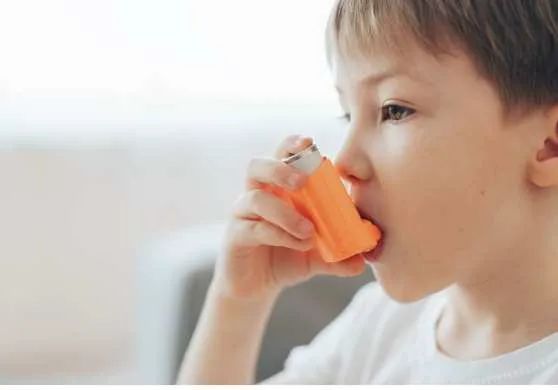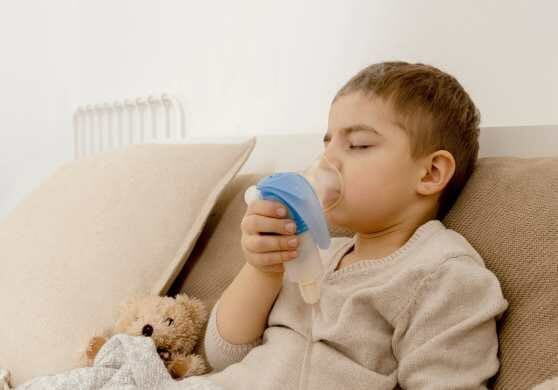Welcome to our comprehensive guide on child asthma attack symptoms. In this article, we aim to provide you with detailed insights into the symptoms, causes, and effective management strategies for childhood asthma. Our goal is to equip you with valuable information that will help you understand this condition and empower you to take proactive steps in managing your child’s asthma effectively.
Understanding Childhood Asthma

Childhood asthma is a chronic respiratory condition characterized by recurring episodes of wheezing, coughing, chest tightness, and shortness of breath. It affects millions of children worldwide, making it a significant concern for parents, caregivers, and healthcare professionals. Understanding the key aspects of childhood asthma is essential for early detection, accurate diagnosis, and appropriate management.
Symptoms of Childhood Asthma
Recognizing the symptoms of childhood asthma is crucial for timely intervention and effective management. Some common symptoms include:
- Wheezing: A whistling or squeaky sound when your child breathes, particularly during exhalation.
- Coughing: Persistent or recurrent coughing, especially at night or during physical activity.
- Chest Tightness: A feeling of constriction or pressure in the chest.
- Shortness of Breath: Difficulty in breathing or experiencing a sense of breathlessness.
Causes and Triggers of Childhood Asthma

Understanding the underlying causes and triggers of childhood asthma can help you minimize your child’s exposure to potential allergens or irritants. While the exact cause of asthma remains unknown, several factors can contribute to its development, including:
- Genetics: A family history of asthma or allergies increases the risk of childhood asthma.
- Environmental Factors: Exposure to allergens such as pollen, dust mites, pet dander, or air pollution can trigger asthma symptoms.
- Respiratory Infections: Viral respiratory infections, especially during early childhood, can increase the likelihood of developing asthma.
- Allergies: Children with existing allergies, such as hay fever or eczema, are more susceptible to asthma.
Diagnosing Childhood Asthma
Accurate diagnosis is crucial for effectively managing childhood asthma. If you suspect your child has asthma, consult a healthcare professional who specializes in pediatric respiratory conditions. The diagnostic process typically involves:
- Medical History: The doctor will ask about your child’s symptoms, family history, and potential triggers.
- Physical Examination: A thorough examination of the chest and lungs will be conducted.
- Lung Function Tests: These tests, such as spirometry, measure how well your child’s lungs function.
- Allergy Testing: Allergy tests may be recommended to identify specific triggers.
Effective Management Strategies – Child Asthma Attack Symptoms

While there is no cure for childhood asthma, several management strategies can help control symptoms and improve your child’s quality of life. It’s important to work closely with your child’s healthcare team to develop an individualized management plan. Here are some key strategies:
- Medications: Depending on the severity of your child’s asthma, the doctor may prescribe quick-relief medications (e.g., bronchodilators) and long-term control medications (e.g., inhaled corticosteroids) to manage symptoms and prevent asthma attacks.
- Trigger Avoidance: Identify and minimize exposure to allergens or irritants that trigger asthma symptoms. This may include maintaining a clean indoor environment, using hypoallergenic bedding, and avoiding tobacco smoke.
- Allergy Management: If allergies contribute to your child’s asthma, allergy management techniques such as allergen immunotherapy may be recommended.
- Regular Check-ups: Schedule regular follow-up appointments with your child’s healthcare provider to monitor their asthma control, adjust medications if necessary, and address any concerns or questions you may have.
How to Test for Asthma in Child?

To test for asthma in a child asthma attack symptoms, a combination of medical evaluation, physical examination, and diagnostic tests is typically conducted. Here’s an overview of the process:
- Medical History: The healthcare provider will ask about the child’s symptoms, including coughing, wheezing, shortness of breath, and chest tightness. They may also inquire about the presence of any triggers or family history of asthma or allergies.
- Physical Examination: The doctor will perform a thorough physical examination, focusing on the chest and lungs. They may listen for abnormal sounds such as wheezing or crackling during breathing.
- Lung Function Tests: These tests are essential for diagnosing asthma and assessing lung function. For younger children who may not be able to perform specific tests, the doctor may use alternative methods such as observation, questionnaires, or peak flow meters.
- Spirometry: This is the most common lung function test used for diagnosing asthma. The child will be asked to take a deep breath and blow forcefully into a tube connected to a spirometer. It measures the amount and speed of air exhaled, helping determine if there is airway obstruction.
- Peak Flow Monitoring: This test measures how fast the child can exhale air forcefully. It involves using a peak flow meter, a handheld device that provides a numerical reading indicating the child’s lung function.
- Exercise Challenge Test: This test assesses how exercise affects the child’s breathing. The child will be asked to engage in physical activity while the doctor monitors their lung function before, during, and after exercise.
- Allergy Testing: Allergy testing may be recommended if allergies are suspected as a trigger for the child’s asthma symptoms. This can involve skin prick tests or blood tests to identify specific allergens.
- Trial of Medication: In some cases, if the child’s symptoms and test results are inconclusive, the doctor may prescribe asthma medication, such as a bronchodilator or inhaled corticosteroid, for a specific period. If the child responds positively to the medication and experiences symptom relief, it can support the diagnosis of asthma.
It is important to note that diagnosing asthma in children can be challenging, as symptoms may vary and other conditions may mimic asthma symptoms. Therefore, consulting with a healthcare professional who specializes in pediatric respiratory conditions is crucial for accurate diagnosis and appropriate management.
How does Asthma Show in Kids?

Asthma can present differently in children compared to adults. In kids, asthma often manifests as recurring episodes of wheezing, coughing, chest tightness, and shortness of breath. These symptoms may be more pronounced during physical activity or at night. Wheezing, a high-pitched whistling sound during breathing, is a common hallmark of asthma in children.
Coughing, especially persistent or recurrent coughing, is another child asthma attack symptoms. Children with asthma may experience chest tightness, describing it as a feeling of constriction or pressure in their chest. Shortness of breath or difficulty in breathing is also frequently reported. It’s important to note that symptoms can vary in intensity and frequency among children. Some may have mild, occasional symptoms, while others may experience more frequent and severe episodes. Identifying these symptoms and seeking medical attention for proper diagnosis and management is essential to ensure the child’s well-being and respiratory health.
FAQS- Child Asthma Attack Symptoms
What is childhood asthma?
Childhood asthma is a chronic respiratory condition characterized by recurring episodes of wheezing, coughing, chest tightness, and shortness of breath in children.
What are the common symptoms of childhood asthma?
Common symptoms of childhood asthma include wheezing, persistent or recurrent coughing (especially at night or during physical activity), chest tightness, and shortness of breath.
What causes childhood asthma?
The exact cause of childhood asthma is unknown, but factors such as genetics, environmental triggers (e.g., allergens, air pollution), respiratory infections, and existing allergies can contribute to its development.
How is childhood asthma diagnosed?
Childhood asthma is diagnosed through a combination of medical history evaluation, physical examination, lung function tests (such as spirometry), and sometimes allergy testing to identify specific triggers.
Can childhood asthma be cured?
Currently, there is no known cure for childhood asthma. However, with proper management strategies, symptoms can be controlled, and children with asthma can lead normal, active lives.
What are the management strategies for childhood asthma?
Management strategies for childhood asthma include medication (quick-relief and long-term control medications), trigger avoidance, allergy management, and regular check-ups with healthcare professionals.
Conclusion – Child Asthma Attack Symptoms
Childhood asthma can be a challenging condition to manage, but with the right knowledge and strategies, you can help your child lead a healthy and active life. By understanding the symptoms, causes, and effective management techniques discussed in this article, you are better equipped to navigate the complexities of childhood asthma and ensure your child’s well-being.
Remember, early diagnosis, regular communication with healthcare professionals, and proactive management are key to optimizing your child asthma attack symptoms. Stay informed, stay vigilant, and provide your child with the support they need to breathe easier.
Check out our latest content on Happykidsasthema Section



